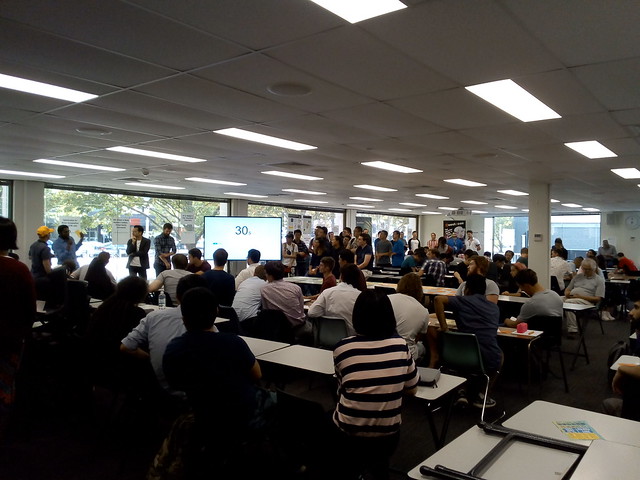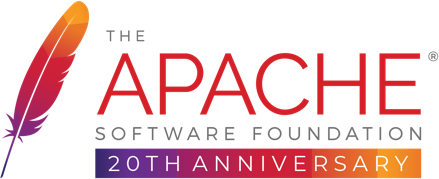I will talk on "Open Content for e-Learning in Response to the Coronavirus" 5 August, 8-9 am, AEST (Canberra Time) as part of the Microlearning Series curated by Manisha Khetarpal at Maskwacis Cultural College in Canada. This is the second of six weekly sessions. Register now.
Higher Education After COVID-19
- Responding to the Coronavirus Emergency with e-Learning
- Open Content created
- Assessments in online delivery
- Tools used to engage students in online delivery
- Mentoring student group work onlin.
- Higher education after COVID-19: Not business as usual
These are online, open to all and free, but please register now. Suggestions are welcome.
Part 2: Open Content for e-Learning in Response to the Coronavirus
Slides and notes (2 Mbytes PDF)Openness in education can apply to the way education is provided as well as the course materials. This is not just about using free stuff to save money. The Open Source movement in computing and the Wikipedia show a way of contributing, as well as using, content. This second talk in the series is based on the chapter "Use of Open Education Resources" in my free e-book "Digital Teaching In Higher Education". Also I will cover some requests from the first talk.
Openness in Education
- Open University
- Open Educational Resources
- Open Business Models
- OER Example: ICT Sustainability
- Questions from last week:
- Is elearning more time consuming?
- Hackerthons & Group Project Work Converging
Open University
- UK Open University established in 1969
- Provide access for disadvantaged students
- Confronted today's issues decades before COVID-19
The UK Open University (OUUK) was established in 1969. Walter Perry, the first Vice Chancellor's 1976 account of the formation of the intuition is a must read for those interested in online university education in the face of COVID-19 today. Many of the issues now being addressed with learning during COVID-19 came up 50 years ago.
"Open" in OUUK
terms is about providing access to a university education to those who do not have access to
traditional university, due to a lack of formal education, money, location, gender or
membership of a minority group. Open universities have used whatever communication technology is available: paper mail, radio and TV broadcast, video and audio tapes, now computers, the Internet, and smart phones.
The Open Universities Australia (OUA) consortium has been delivering on-line courses from some of Australia's most respected universities for decades. Australia's University of New England (UNE) was one of the models for OUUK and there are hundreds of open universities around the world.
I find it frustrating when I hear of concerns expressed about remote learning today as if these are new and novel: problems identified, and for which solutions were found, decades ago.
References:
Remove Barriers to Australian On-line Universities (Blog Post), Tom Worthington, September 21, 2013, The Higher Education Whisperer
Open Educational Resources
"digitised materials offered freely and openly for educators, students and self-learners to use and reuse for teaching, learning and research"
"Think free as in free speech,
not free beer."
Richard Stallman
(quoted by Lessig, Lawrence 2006).
Photo Galuel / CC BY-SA
From OECD, Centre for Educational Research and Innovation, 2007 (in CETIS, 2008).
MIT's OpenCourseWare can be modified for reuse, unlike most MOOCs.
The Microlearning Series has had many presentations about the concept of Open Learning, so I will not go into much detail here. The idea is appealing, but the practice is difficult.
Two examples of OER are MIT's OpenCourseWare and more recent Massive Open Online Courses (MOOCs). An important distinction is that MIT allowed their content to be modified and reused. Many other providers don't allow modification, and some limit reuse.
References:
CETIS, J. (2008). Open educational resources-Opportunities and challenges for higher education. http://wiki.cetis.ac.uk/images/0/0b/OER_Briefing_Paper.pdf
Open Business Models
The major failing in many OER projects has been how to sustain them. Projects are usually funded by a government, an institution or a corporation in a burst of autistic enthusiasm, but the funding runs out and the project folds. There has to be a way for OER as to provide a reward to those undertaking it, so they can keep doing it.The Open Source movement in computing provides one model. Individuals, corporations, governments and universities work on software which can be modified and used for free. They do this partly for the common good, but also so they can make use of the resulting software, including commercial companies for profit.
An alternative approach is where a not-for profit organization can solicit ongoing donations to cover the cost, while making use of mostly donated labor. While not working fr profit, The Wikimedia Foundation, which runs the Wikipedia, and the Apache Software Foundation, which provides much of the software for the Internet, are sophisticated organizations with significant revenue.
OER Example: ICT Sustainability
- Graduate online course
- Run by ACS and ANU in 2009
- Also offered through Open Universities Australia
- Adapted for Athabasca University by Brian Stewart
- Moodle file, e-book under a CC BY-SA open license.
The Australian Computer Society (ACS) me to
design an e-learning course in “Green ICT Strategies” in 2008, to
train computer professionals in how to estimate and reduce CO2 emissions. The ACS allowed me to retain the intellectual properly, so I released it under a Creative Commons license. It was run as part of the ACS graduate level certificate in February 2009, and the Australian National University
(ANU) Masters of Computing from July 2009. ACS also offered the course through Open Universities Australia. A
North American version of the course was developed by Brian Stewart for Athabasca
University (Canada) in 2011 and is still running as "Green ICT
Strategies".
The course was developed in Moodle, with an e-book of notes, under a CC BY-SA open license. A traditional distance education asynchronous approach was used with quizzes, discussion questions and assignments.
Originally ACS created the course for public benefit. Each time I ran the course for ANU I would make improvements, which could be used by others.
Reference:
Worthington, T., "A Green computing professional education course online: Designing and delivering a course in ICT sustainability using Internet and eBooks," Computer Science & Education (ICCSE), 2012 7th International Conference on , vol., no., pp.263,266, 14-17 July 2012 URL: http://dx.doi.org/10.1109/ICCSE.2012.6295070 Preprint available at: http://hdl.handle.net/1885/9013
Is e-learning more time consuming?
- Not if you know what you are doing, as a student or teacher.
- Don't waste time talking at students while they passively listen.
- Budget staff and student time on what is important: student activities and assessment.
- OER and Open Access Software can help
Last week one of the questions asked in the forum was: "Is e-learning more time consuming". If you have learned how to learn, or teach, online and a disciplined in what you do, then the answer is "no". However, there can be much frustration, and time-wasting, where teachers try to replicate a classroom experience and students expect that.
A common complaint by students (one I read in a Facbook post today) is that the teachers are not teaching them online, but instead leaving them to work out what to do themselves.
The teachers job is to guide the student's learning, not tell them what to do in detail. Live "lectures" online, or in a classroom, are about the least useful form of instruction for this. A tutor talking to a small group of students is also of little educational value. Instead the teacher needs to focus on getting students to do things, and reflect on what they have done.
OER and Open Access software can help. These can not only save time, but also provide useful pointers to ways of working better. Rather than prepare materials yourself, alone, work with others. Rather than studying alone, work with others. Decide in advance to share your results, acknowledging everyone's contribution.
Hackerthons & Group Project Work Converging
 | |
| ANU TechLauncher, Team Formation Exercise, 2018 |
ANU TechLauncher team formation: 300 students and 40 clients for two hours online.
Same tools and techniques used:
One way to get students to engage with their studies is with projects. However, group projects can impose a large administrative overhead for teachers. For years I have been supervising formal university group projects, usually as part of a capstone: required to be completed before the student can graduate. These projects take 12 or 24 weeks, with students in class with a tutor for two hours a week.
At the same time I have been mentoring teams in hacker competitions, which typically take 72 hours, run at a venue 12 or 24 hours a day, usually over a weekend. The hackerthon participants are mostly students, but these are are extra-curricular with no course credit, but some prizes.
The photo shows how these large scale exercises used to be done: in a large room over many hours at a time (Worthington, 2020). Some large hackerthons took over whole university buildings, or floors of corporate headquarters. There is considerable excitement generated by the close physical proximity and fast pace.
With COVID-19 both the project courses and the hackerthons have moved online using the same project management and communication tools. There is the possibility to use hackerthons as a form of group teaching technique. This approach emphasizes the participants organizing their own work and those who participated previously running later events.
References:
Lessons Learned From Executing Successful Virtual Hackathons, , Forbes, Jun 11, 2020. URL https://www.forbes.com/sites/forbestechcouncil/2020/06/11/lessons-learned-from-executing-successful-virtual-hackathons/
Online real time student project team formation with Zoom and Slack, Tom Worthington (Blog post), The Higher Educaiton Whisperer, 1 August 2020. URL https://blog.highereducationwhisperer.com/2020/08/online-real-time-student-project-team.html
Worthington, T. (2020, June). Blend and Flip for Teaching Communication Skills to Final Year International Computer Science Students. Paper accepted for the IEEE International
Conference on Teaching, Assessment and Learning for Engineering (TALE),
10-13 December 2019, Yogyakarta, Indonesia. URL https://openresearch-repository.anu.edu.au/handle/1885/204833


.png/770px-Galuel_RMS_-_free_as_free_speech%2C_not_as_free_beer_(cropped).png)


No comments:
Post a Comment